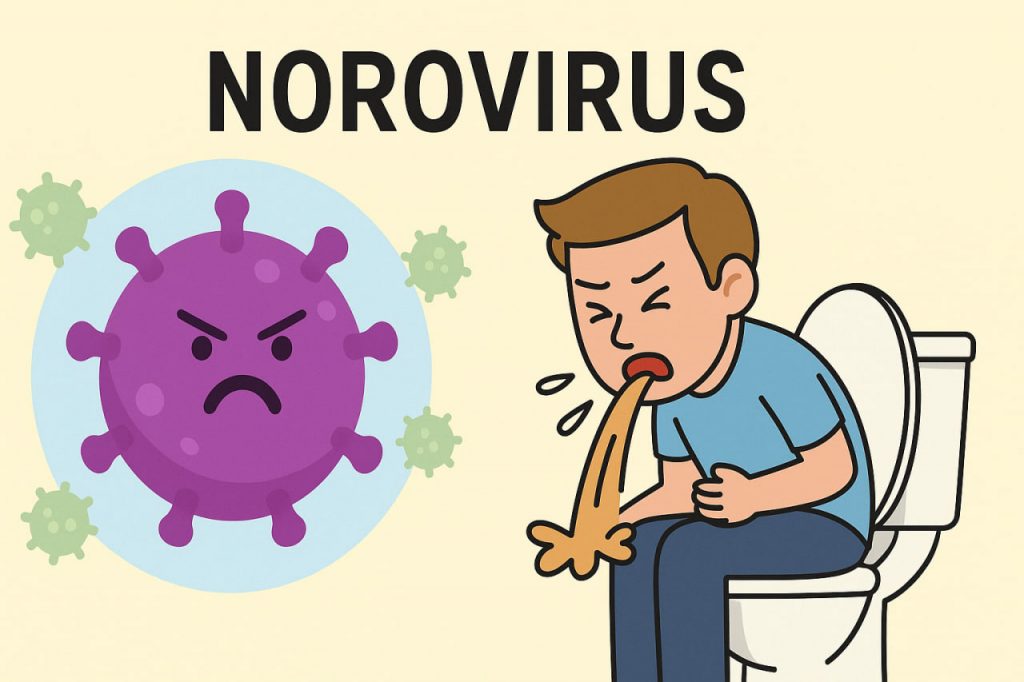Norovirus is a highly contagious virus that causes acute gastroenteritis, often referred to as the “stomach flu.” It spreads rapidly in communities, especially in schools, hospitals, and cruise ships. Norovirus infections can occur year-round but are most common in the winter months. Despite being short-lived, infections cause significant discomfort and disruption.
How Norovirus Spreads
Transmission occurs mainly through the fecal-oral route. People can become infected by consuming contaminated food or water, touching contaminated surfaces, or having direct contact with an infected person. The virus is extremely resilient, surviving on surfaces for days and resisting many common disinfectants. This explains its tendency to cause large outbreaks.
Symptoms of Infection
Norovirus typically causes:
- Nausea and vomiting
- Diarrhea and stomach cramps
- Low-grade fever
- Headache and muscle aches
Symptoms usually appear 12–48 hours after exposure and last 1–3 days. Most people recover without complications, but dehydration can be dangerous, especially for young children, the elderly, and people with weakened immune systems.
Diagnosis and Treatment
Norovirus is usually diagnosed based on symptoms and outbreak patterns rather than laboratory tests. There is no specific antiviral treatment for norovirus. Management focuses on preventing dehydration by drinking fluids and replenishing electrolytes. Medical consultation is recommended if severe dehydration, prolonged symptoms, or complications occur.
Prevention Measures
Preventing norovirus requires strict hygiene practices:
- Frequent and thorough handwashing with soap and water
- Proper cleaning and disinfection of contaminated surfaces
- Safe food handling, including thorough cooking of shellfish
- Avoiding close contact with infected individuals until at least 48 hours after recovery
Since norovirus is highly contagious, even small lapses in hygiene can trigger outbreaks.
Global Impact
Norovirus is the leading cause of viral gastroenteritis worldwide. It is responsible for hundreds of millions of cases annually and causes significant healthcare costs. While most infections are mild, outbreaks in healthcare facilities and among vulnerable populations can be serious. Research is ongoing to develop vaccines and more effective prevention strategies.
Conclusion
Norovirus is a small but powerful pathogen, capable of spreading quickly and causing widespread illness. While symptoms are usually self-limiting, its contagious nature makes it a global health concern. Good hygiene, food safety, and outbreak control measures remain the most effective defenses until more advanced treatments or vaccines become available.
Glossary
- Norovirus – virus that causes gastroenteritis, leading to vomiting and diarrhea.
- Gastroenteritis – inflammation of the stomach and intestines.
- Fecal-oral route – transmission through ingestion of contaminated material.
- Electrolytes – essential minerals needed to maintain fluid balance.
- Outbreak – sudden increase in cases of infection in a community.
- Dehydration – condition caused by excessive fluid loss.


